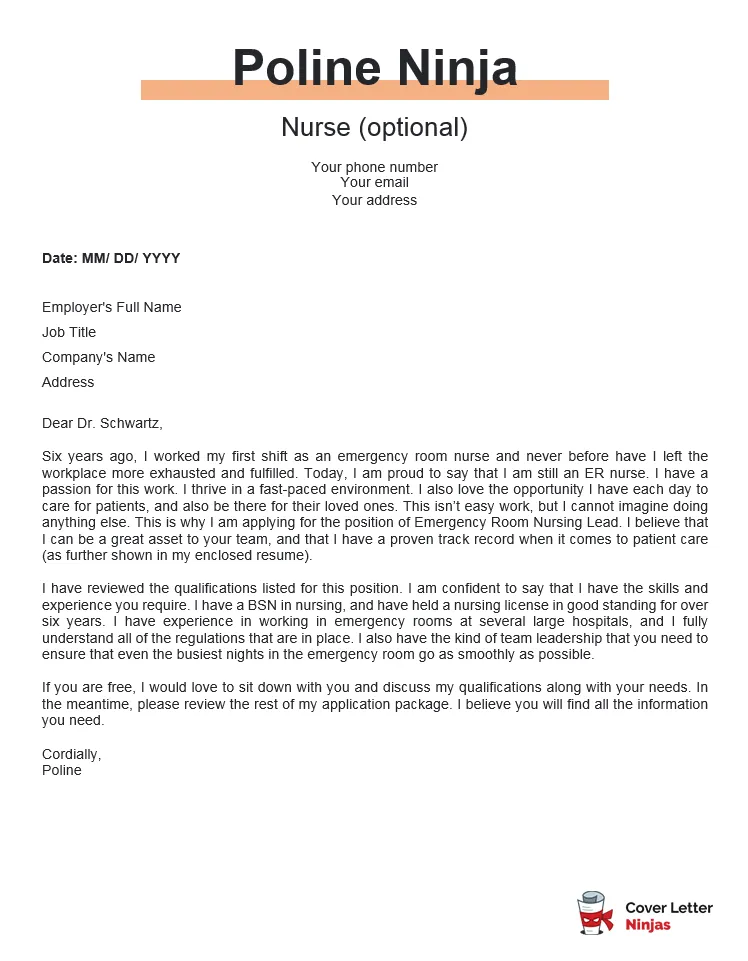Crafting Your Nurse Cover Letter
A well-crafted nurse cover letter is your first impression, a crucial document in your job application. It’s more than just a formality; it’s your opportunity to showcase your personality, skills, and passion for nursing. This guide will walk you through the essential steps to create a cover letter that not only impresses potential employers but also increases your chances of landing an interview. From understanding the purpose of a cover letter to tailoring it to the specific job, we’ll cover everything you need to know. By following these guidelines, you can transform your cover letter into a powerful tool that sets you apart from the competition and helps you achieve your career goals. Let’s begin the journey to a compelling cover letter that opens doors to your nursing career aspirations.
Understanding the Purpose of a Cover Letter
The primary purpose of a nurse cover letter is to introduce yourself, highlight your key qualifications, and express your interest in a specific nursing position. It serves as a supplement to your resume, providing a more personal and detailed account of your skills, experience, and career aspirations. The cover letter allows you to connect your qualifications with the needs of the employer, demonstrating how you can contribute to their healthcare team. It also offers a platform to elaborate on your clinical experience, professional achievements, and the unique value you bring. By crafting a persuasive cover letter, you can demonstrate your enthusiasm and commitment to the role, increasing your chances of securing an interview.
Importance of a Cover Letter for Nurses
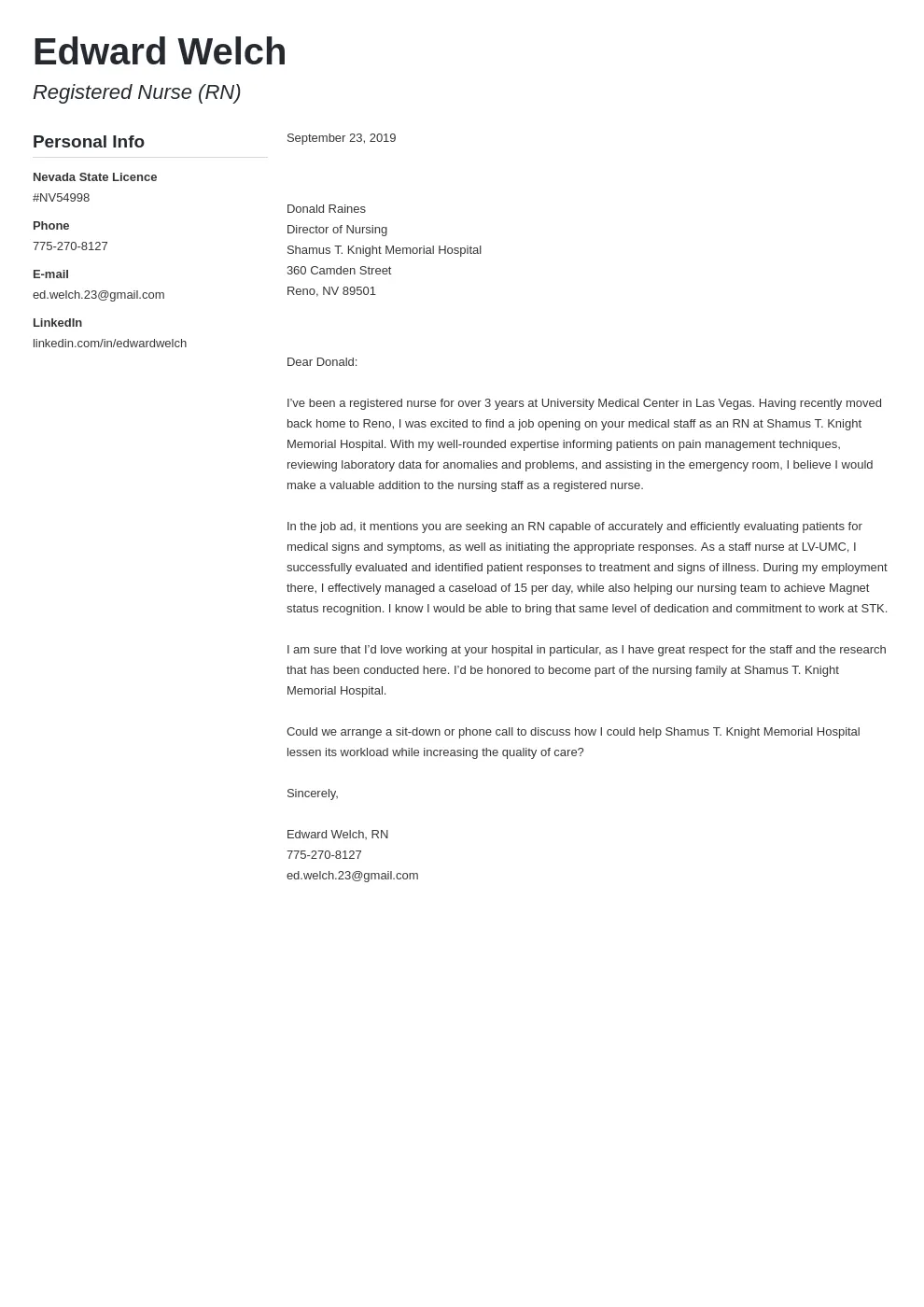
In a competitive job market, a well-written cover letter is essential for nurses. It offers a significant advantage by allowing you to personalize your application and provide context to your resume. Unlike a resume, a cover letter lets you explain gaps in employment, highlight specific skills that align with the job description, and showcase your personality. This is particularly crucial in the nursing field, where soft skills like empathy, communication, and teamwork are as important as clinical expertise. By articulating your unique attributes and demonstrating your understanding of the healthcare organization’s values, you can make a strong first impression and distinguish yourself from other applicants. Furthermore, a cover letter reveals your professionalism and attention to detail, qualities highly valued in nursing.
Essential Components of a Nurse Cover Letter
A comprehensive nurse cover letter includes several essential components, each playing a vital role in presenting you as a qualified candidate. These components work together to create a cohesive and compelling narrative that captures the hiring manager’s attention. From your contact information to the closing call to action, each element contributes to the overall impact of your application. By ensuring that each section is well-crafted and aligned with the job requirements, you can significantly enhance your chances of making a positive impression and securing an interview. Let’s dive into the specific details that make up a standout nurse cover letter.
Your Contact Information
Start your cover letter with your full name, address, phone number, and professional email address. This information should be at the top of the page, typically aligned to the left or right. Ensure your email address is professional and easy to read; avoid using nicknames or unprofessional handles. Providing accurate contact details is crucial, as it allows the hiring manager to easily reach you for an interview or further inquiries. This section establishes your professionalism and ensures that the employer can quickly and efficiently communicate with you regarding the job opportunity. Double-check all details for accuracy to avoid any missed opportunities.
Date and Hiring Manager Details
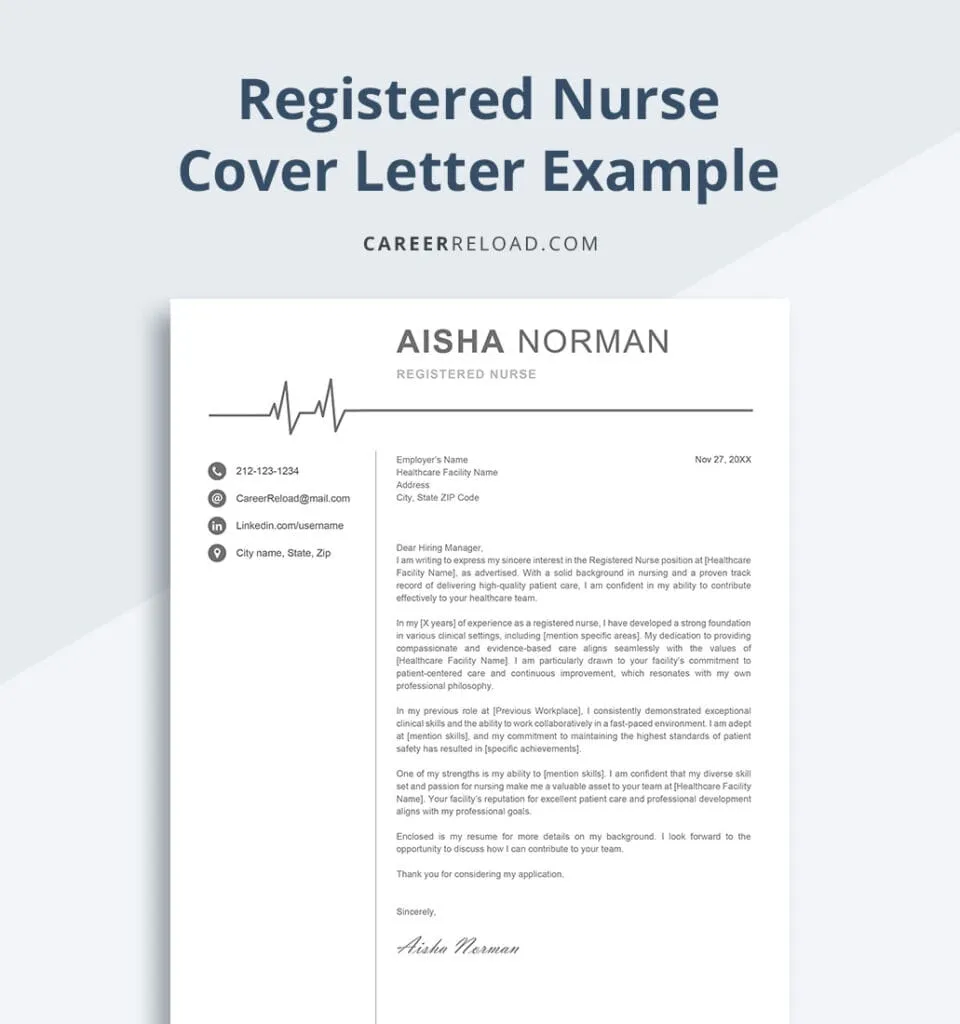
Below your contact information, include the date you are writing the letter. Then, address the hiring manager by name if possible. Research the organization to find the name of the hiring manager or the person responsible for reviewing applications. If you can’t find a specific name, use a formal salutation like “Dear Hiring Manager.” Addressing the letter to a specific person shows that you have done your research and are genuinely interested in the position. Include the hiring manager’s title and the company’s address below the date, ensuring that your letter looks professional and demonstrates your attention to detail. This step personalizes your application and demonstrates your proactive approach.
Professional Salutation
Choose a professional salutation to begin your letter. Use “Dear Mr./Ms./Dr. [Last Name]” if you know the hiring manager’s name. If you don’t know the name, use “Dear Hiring Manager” or “Dear [Department Name] Hiring Team.” Avoid casual greetings such as “Hi” or “Hello.” The salutation sets the tone for the rest of your letter and shows respect. A proper salutation demonstrates your professionalism and sets a positive tone from the start. Ensure you spell the name correctly and use the appropriate title to show your attention to detail and respect for the recipient.
Writing Your Cover Letter Body
The body of your nurse cover letter is where you make your case for why you are the ideal candidate. This section should be well-structured, concise, and tailored to the specific job requirements. It’s your opportunity to showcase your skills, experience, and achievements, making a strong connection between your qualifications and the needs of the employer. The body should be divided into paragraphs that flow logically, presenting your key strengths and demonstrating your enthusiasm for the role. By crafting a compelling body, you can capture the hiring manager’s attention and significantly increase your chances of securing an interview.
Opening Paragraph: Grab Attention

Start with a strong opening paragraph to grab the reader’s attention. Clearly state the position you are applying for and where you saw the job posting. Briefly mention why you are interested in the role and what initially attracted you to the organization. This could be the organization’s reputation, values, or a specific aspect of the role that excites you. Make it clear that you understand the job requirements and are confident you can meet them. Use an enthusiastic tone that shows you are excited about the opportunity and are prepared to bring your skills and expertise to the organization. A compelling opening sets the stage for the rest of your letter and encourages the hiring manager to continue reading.
Highlighting Your Skills and Experience
The next part of your cover letter should highlight your relevant skills and experience. Review the job description carefully and identify the key skills and qualifications the employer is seeking. Then, provide specific examples of how you have demonstrated these skills in your previous roles. Use action verbs to describe your accomplishments and quantify your achievements whenever possible. For instance, instead of saying “Managed patient care,” you could say, “Managed care for over 30 patients daily, ensuring optimal patient outcomes and satisfaction.” This section should show a clear match between your abilities and the requirements of the job, making it evident that you are a strong fit for the position.
Quantifying Your Achievements
Quantifying your achievements is a powerful way to demonstrate your value. Use numbers and data to illustrate your accomplishments. For example, “Reduced patient readmission rates by 15%” or “Trained and mentored a team of 10 new nurses.” Providing specific metrics adds credibility to your claims and gives the hiring manager a clear understanding of your impact. Quantifiable achievements make your cover letter more persuasive and show the tangible results you can deliver. Always focus on outcomes and results, demonstrating your ability to make a difference in patient care and organizational efficiency.
Tailoring Your Letter to the Job Description
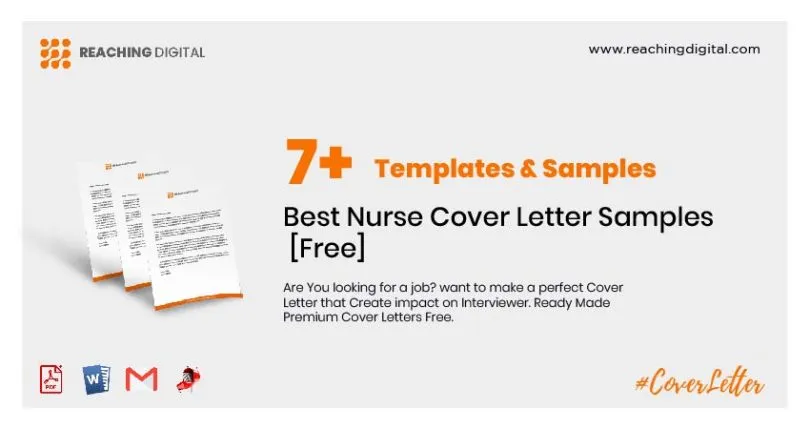
Customize your cover letter for each job application. Review the job description and identify the specific requirements and keywords used by the employer. Then, tailor your cover letter to address these requirements directly. Highlight the skills and experiences that align with the job description, and use the same language and terminology. Show how your qualifications meet the employer’s needs and why you are the best fit for the position. This tailored approach demonstrates that you have carefully considered the role and are genuinely interested in the specific opportunity, increasing your chances of getting noticed.
Closing Paragraph: Call to Action
In your closing paragraph, reiterate your interest in the position and express your enthusiasm for the opportunity. Thank the hiring manager for their time and consideration. Clearly state your availability for an interview and provide your contact information again. End with a professional closing, such as “Sincerely” or “Respectfully,” followed by your typed name. A strong call to action encourages the hiring manager to take the next step and signals your eagerness to move forward in the hiring process. This final touch reinforces your professionalism and leaves a positive lasting impression.
Formatting and Proofreading
Proper formatting and meticulous proofreading are crucial for a polished and professional cover letter. The format and appearance of your letter reflect your attention to detail and your respect for the hiring process. Proofreading ensures that your letter is free of errors, which can undermine your credibility. By focusing on these two areas, you demonstrate your professionalism and increase your chances of making a positive impression. Always ensure your cover letter is presented in a way that makes it easy and pleasant to read, and carefully review it for any mistakes.
Choosing the Right Font and Layout
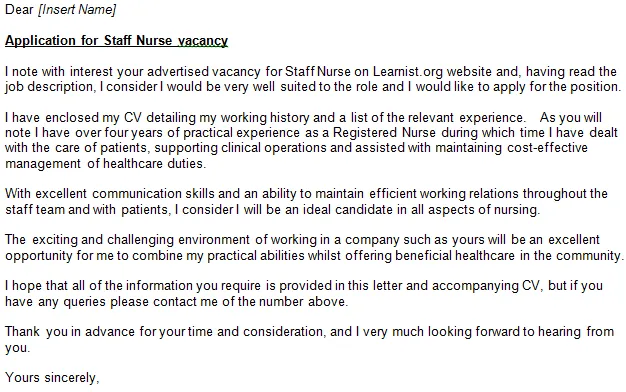
Choose a professional font such as Times New Roman, Arial, or Calibri in a readable size (11 or 12 points). Use a simple, clear layout with consistent margins (typically one inch on all sides) and proper spacing between paragraphs. Avoid using complex or decorative fonts, as they can be distracting. The goal is to make the letter easy to read and visually appealing. Organize your content with clear headings and bullet points where appropriate to improve readability. A well-formatted cover letter is more likely to capture the hiring manager’s attention and present you as an organized and detail-oriented candidate. Make sure your layout is consistent throughout the document.
Proofreading for Errors
Thoroughly proofread your cover letter for any grammatical errors, spelling mistakes, and punctuation issues. Errors can damage your credibility and suggest a lack of attention to detail. Use a spell checker, but don’t rely on it entirely. Read your letter aloud to catch any awkward phrasing or unclear sentences. Ask a friend, family member, or career counselor to review your letter for a fresh perspective. Proofreading is an essential step in the writing process, ensuring that your cover letter presents you as a polished and professional candidate. A clean, error-free letter shows that you care about the details and are committed to excellence.
Reviewing Nurse Cover Letter Examples
Reviewing successful nurse cover letter examples can provide valuable insights and inspiration. These examples can guide you in structuring your letter, highlighting your skills, and using appropriate language. By analyzing well-written cover letters, you can learn from the best practices and adapt them to your situation. Look for examples that match your experience level and the type of nursing position you are seeking. Comparing different examples can help you understand how to tailor your letter to various job descriptions and healthcare settings. Remember that while these examples offer a template, your cover letter should always be personalized and reflect your unique qualifications and experiences.
Analyzing Successful Cover Letters
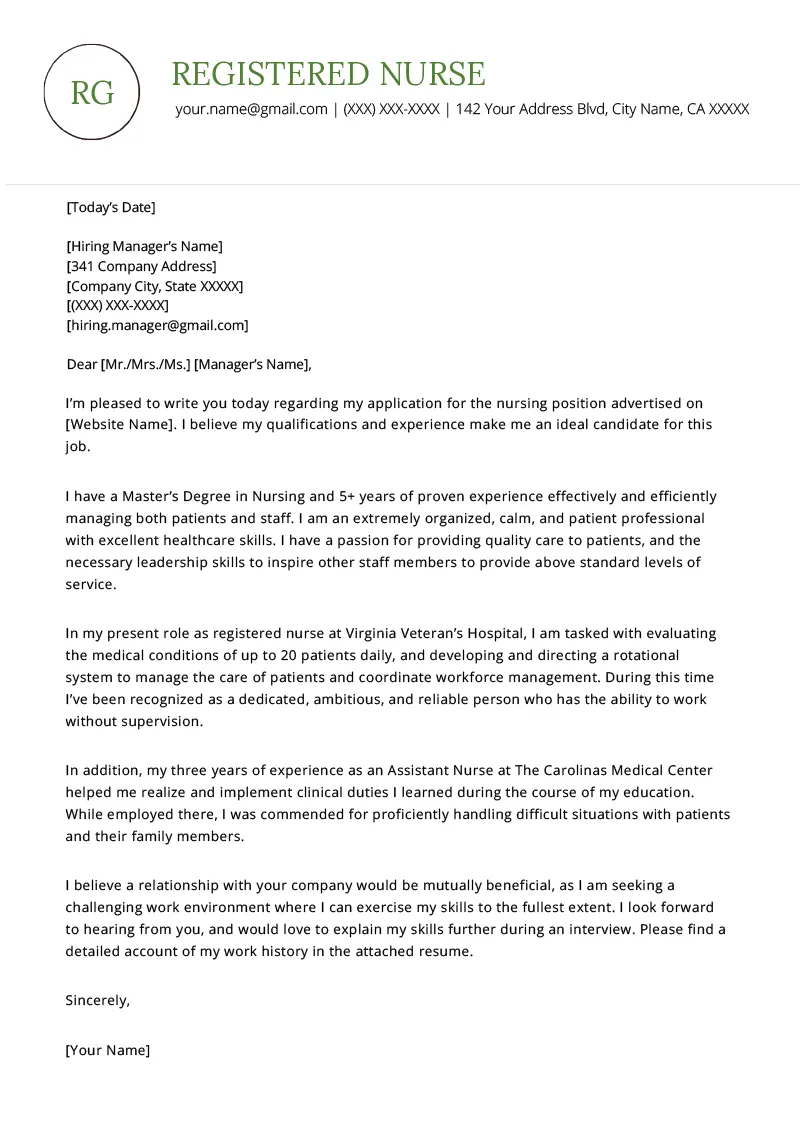
When reviewing examples, pay close attention to how the writers highlight their skills and experience. Notice how they use action verbs to describe their accomplishments and quantify their achievements whenever possible. Analyze the structure of the letter, paying attention to the flow of information and the clarity of the writing. Identify the keywords and phrases used to demonstrate a strong match with the job requirements. Study how they express their enthusiasm for the position and their understanding of the healthcare organization’s mission and values. Analyzing successful examples will help you to understand the elements that make a cover letter effective and persuasive.
Adapting Examples to Your Situation
While using cover letter examples as a guide, it is crucial to adapt them to your specific situation. Don’t simply copy and paste from an example; instead, use it as a template and personalize it with your own details and experiences. Replace the generic information with your specific skills, achievements, and career goals. Tailor the language to match your personality and the tone of the job description. Ensure that your cover letter reflects your unique qualifications and demonstrates why you are the best candidate for the role. By personalizing your letter, you show that you have carefully considered the opportunity and are genuinely interested in the specific position.
